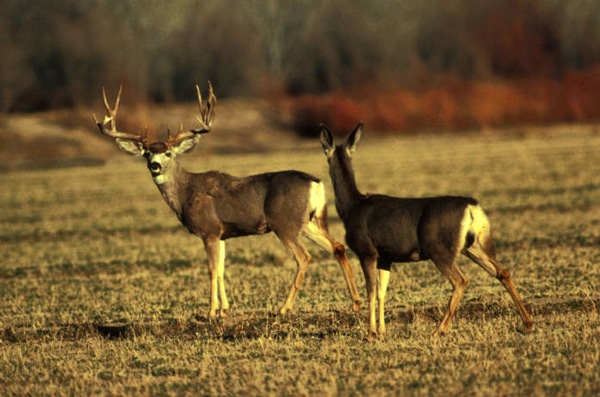
A historical Texas drought, which has already cost Texas farmers and ranchers more than $5 billion this year, was forecast to have a negative impact on the state’s white-tail deer population with smaller and malnourished wildlife expected to dampen prospects of a good opening weekend or a long successful season.
But in spite of the warnings that the drought might make for a slim deer harvest and be the cause of poor health among white-tail deer, a random check across the state indicates opening weekend yields were near average and more surprising perhaps, deer health conditions are being reported better than expected.
“So far we are seeing some fairly healthy mature bucks that were taken opening weekend with fair antler conditions,” reports David Ross, Texas Parks & Wildlife Department (TPWD) biologist in Uvalde. “It’s fair to say the buck numbers are down about 20 percent and doe numbers down about 10 percent, and fawn survival was, of course, down as a result of the drought. But late season rains in Kinney, Maverick and Uvalde Counties brought the mesquite beans out and the deer seemed to have fattened up a bit prior to the start of the [hunting] season.”
Kathy McGinty, TPWD wildlife biologist in Abilene, agrees.
“You know, we’re seeing pretty healthy deer, especially those on managed land. Free range deer didn’t do so well, but hefty feeding throughout the summer has provided some fairly healthy deer in our region. The fawn crop is really bad and young bucks haven’t developed the way we would like, but mature bucks are fairly fat and in good health,” she reports.
McGinty says her husband hunted the Central Hill Country on opening weekend and was surprised to see “fat bucks down there as well.”
Fewer hunters
Ross says the big concern may have been whether ranchers and property owners would see the healthy return of hunters in large number given the early reports of poor wildlife conditions and because of the slow economy.
“I think we may see a slightly smaller number of day hunters as a result of the economy, but out of the 180 established ranch leases in my area, all I am hearing is that the hunters turned out in numbers for opening weekend. But the cost of deer corn this year is going to take a bite out of lease-related revenue this year, so the drought can be blamed for that,” he says.
TPWD biologist Alan Cain says hard-hit South Texas is feeling the drought crunch with smaller and malnourished deer.
"It doesn't take a biologist to understand that drought means we will see serious impacts on the state's nearly four million white-tailed deer," says Cain, who is the deer program leader for TPWD. “I am especially concerned about the coming winter when conditions will be hardest. We’re going to suffer a lot of losses.’”
He says natural food and water resources are sparse heading into the winter months, when wildlife needs nourishment most, and unless significant rains fall before then, the state’s white-tail population is going to take a bigger hit.
But he is also quick to point out that the drought has cleared away a lot of underbrush and says deer will be easier to spot this year. If hunters are aggressive inmeeting their limits, it could be possible that last years record 688,000 deer harvested in Texas could be broken.
State biologists are suggesting that hunters take a healthy harvest this year to help manage the poor drought conditions. They warn that drought typically affects the very old and the very young first, and by then the habitat is in disrepair and healthy deer suffer from lack of forage, meaning further losses are incurred on a healthy population.
About the Author(s)
You May Also Like






